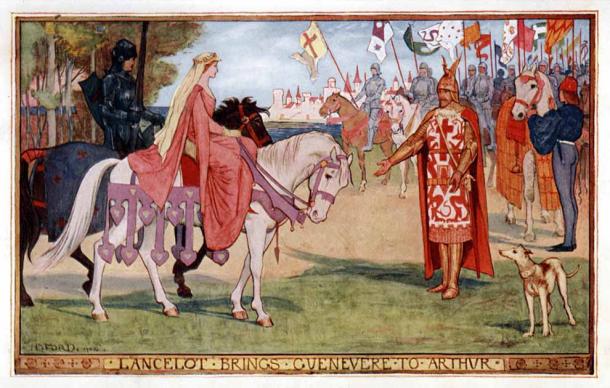The earliest mention of Guinevere is in Geoffrey Monmouth’s History of the Kings of Britain . This book laid out the basics of the traditional Arthurian legend that later authors would use as a source for elaboration. It includes many of the legend’s central characters, but in more basic and less detailed forms.Share
This text refers to Guinevere as Gwenhuvara, which comes from the Welsh name Gwenhwyfar. The meaning of the name is not known, but we do know it references a female figure from Welsh mythology famed for her bad reputation. The name was associated with the idea of infidelity, and as such, was still used as a way to insult a young woman’s character up until the end of the 19th century.
In Monmouth’s version, Guinevere is simply described as Arthur’s queen and a great beauty descended from the Romans. According to the tale, Arthur leaves Camelot to wage war in Europe and leaves his wife and kingdom in the care of his traitorous nephew, Mordred. Mordred wastes no time in seducing Guinevere and taking the throne for himself. When Arthur returns, Guinevere flees the kingdom due to feelings of guilt and joins a nunnery. Mordred and Arthur go on to duel it out in a great battle that ends with them both mortally wounded.
Monmouth never goes into detail about the affair between Mordred and Guinevere. Authors who came slightly later, like Wace (1110-1174 AD) and Layamon (12th-13th century), were less generous in their depictions of Guinevere. These authors showed her as complicit in the coup. Most contemporary writers disagreed with this take, however, and usually depicted her as having been abducted by Mordred and being forcefully seduced. From these early versions of the tale, it is hard to learn much about Guinevere. She is never given much characterization; she primarily acts as a plot device. All we can really discern is that her character may be at least partly based on a figure from Welsh mythology . (Read more.)
What Child is This?
1 week ago


















No comments:
Post a Comment